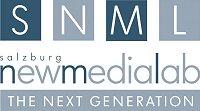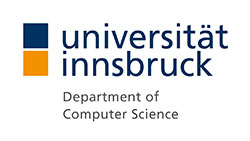Research is the core task of STI Innsbruck. Our motto is "Enabling Semantics". Find out more about our current research directions!
Archive
This page lists the current projects with STI Innsbruck. Please see the archive and the historical projects for more on completed projects.
REflecting kNowledge DivERsity (RENDER) Website: http://render-project.eu/is
The RENDER project addresses the challenges arising when analyzing the dynamics of online information. An amazing diversity of opinions, viewpoints, mind sets and backgrounds can be extracted from Web content. Large scale data management calls upon fundamental challenges with respect to the purposeful access, processing and management of the Web’s dynamic information avalanche, in particular when leveraging the diversity that inherently unfolding through world wide scale collaboration. RENDER will engage with these challenges by developing methods, techniques, software and data sets that will leverage diversity as a crucial source of innovation and creativity, whilst providing enhanced support for feasibly managing data at very large scale, and for designing novel algorithms that reflect diversity in the ways information is selected, ranked, aggregated, presented and used in popular communication and collaboration platforms such as MediaWiki, Twitter, WordPress and Google Wave. RENDER will help to realize a world where information is acquired and shared in a fundamentally different manner than the consensual approach promoted by movements such as Web 2.0, and where communication and collaboration across the borders of social, cultural or professional communities are truly enabled via advanced Web technology, supporting one of the credos of European society: “United in diversity”. The project will run for 36 months starting in October 2010. |
Renewable Energy Services on an Infrastructure for Data Exchange (RESIDE)
RESIDE is an ÖAD co-funded mobility project between Austria and China. The project aims to enable development and deployment of highly personalized services based on sensor, smart meter and user input data, applicable to the new scenarios emerging from the renewable energy introduction and the settings of both countries. RESIDE objectives are: 1. To build an energy efficiency and passive house data infrastructure, identifying common points of interest in relevant data usage, based on the renewable service specification, smart home sensor and metering data repositories that are available to the consortium, with a semantic access and business models ensuring the sustainability of the infrastructure maintenance and use. 2. Build renewable energy related pilot services on this infrastructure that can be eventually durably exploited with the use for both countries, as well as enable and motivate third-party developers to build added value services on this repository and benefit from them. |
RW2 Web Services are widely seen as the most promising technology to enable interoperability among heterogeneous applications. However, current technologies only describe syntactical aspects of Web Services, providing a very limited automation support for the integration task. Semantic Web technologies are being applied to Web Services with the aim of offering a higher support for the automation of a number of tasks, significantly improving the quality of the integration tasks while drastically reducing its cost. The RW² project follows the direction of research that describes Web Services using semantic annotations. |
Salero SALERO's goal is to define and develop "intelligent content" objects with context-aware behaviours for self-adaptive use and delivery across different platforms, building on and extending research in media technologies, web semantics, and context based image retrieval, to reverse the trend toward ever-increasing cost of creating media. SALERO aims to advance the state of the art in digital media to the point where it becomes possible to create audiovisual content for cross-platform delivery using intelligent content tools, with greater quality at lower cost, to provide audiences with more engaging entertainment and information at home or on the move. The RTD addresses:
|
Salzburg NewMediaLab – The Next Generation (SNML-TNG) Website: http://www.newmedialab.at/
Salzburg NewMediaLab – The Next Generation (SNML-TNG) is the competence centre in Austria that takes the knowledge and media industry into the Future Internet, helping its partners to address the new challenges arising with the paradigmatic shift that is currently affecting the industry. SNML-TNG conducts research on the socio-economic and the technological level in the fields of Social Computing, Social Media & Enterprise 2.0, Semantic Web & Linked Data, and Multimedia Annotations. A common trait of all fields is “Linked Media”, which is therefore at the heart of the SNML-TNG research programme. Linked Media is the convergence of linked people, linked content, and linked data.
SNML-TNG brings together leading Austrian research institutes with a proven excellence in the areas of Social Media, Semantic Technologies and Multimedia (Salzburg Research, STI Innsbruck, FH Salzburg) and major members of the Austrian knowledge and media industry (ORF, Red Bull Media House, basis wien), as well as a number of innovative technology companies (punkt. netServices, mediamid, Technodat). |
Security UPgrade for PORTs (SUPPORT) Website: http://www.supportproject.info/
SUPPORT aims to raise the current level of port security by integrating legacy port systems with new surveillance and information management systems. SUPPORT will provide the necessary and sufficient security level to satisfy evolving international regulations and standards while efficiently supporting the complexity of the real port environment. As part of this, SUPPORT will also facilitate efficient and, where required, real-time exchange of security related information within the supply chain and between ports and authorities. SUPPORT partners include a number of ports that have been selected to represent typical, but different operations. Starting from the perspective of the partner port operations, the project will use a cost-benefit method to identify the main security gaps and will describe security measures to maintain or augment the efficient and secure operation of these ports. The approach will combine creative and analytical techniques to identify as many relevant threats as possible. After making an inventory of security gaps these will be developed into generic port security models. The models will be used to suggest security upgrade solutions, taking into account the cost-benefit factors of the available technology. Peer-to-peer communication and decision support tools incorporating semantic technologies will be developed, using as far as possible standard open architecture software, accessible to all the port security stakeholders. The results will be demonstrated at the ports of Gothenburg and Piraeus. SUPPORT will include policy and standardisation proposals and training for participating port personnel as well as dissemination activities for other ports and stakeholders. One aim of SUPPORT is to provide general methods and technology supported by training services that can be used by any European port to efficiently enhance its security level. |
Seekda Social Agent (SESA) Website: http://sesa-project.sti2.at/
The Seekda Social Agent (SESA) will help the hotelier in dealing with the challenge to improve and maintaining his communication needs in a world with an exploding number of channels in order to maintain or better increase his market share (i.e., the number of bookings and the attached price) by keeping the related transactions costs for on-line communication and booking manageable. Organizations of all sizes, commercial and not-for-profit, regularly face the challenge of communicating with their stakeholders using a multiplicity of channels, e.g. websites, videos, PR activities, events, email, forums, online presentations, social media, mobile applications, and recently structured data. The social media revolution has made this job much more complicated, because:
|
Semantic Based Network Management (SemNetMan) The project SemNetMan (semantic based network/cluster management) combines two methods relevant for the knowledge society: the social network analyses (SNA) and techniques of the semantic web. The resulting method should enable efficient network management within the scope of project environments and related requirements. The design of the methodology is embedded in three use cases: the network of the Semantic Web School, the Platform Wissensmanagement and the Austrian Biogasnetzwerk. The project is realized by seven Austrian organisations from research to industry containing specialists from network management, semantic technologies and social network analyses. SemNetMan is supported by the protecNETplus programm of FFG. |
Semantic Direct Booking Bot (SDB2) Subtitle: dynamic on-the-fly access to (new) data sources and web services by chatbotsThe Web is facing a major paradigm shift. Over the next few years it will transform from a human readable platform to a platform for bots. Therefore, the prerequisite for content, data, and service providers to be visible in this "new" web, is the proper structuring and the semantic annotation of their data and services. Semantic technologies will be the backbone infrastructure enabling this paradigm shift. Chatbots and intelligent personal assistants currently only work with hard wired data sources and services. They can give information about addresses, opening hours, the weather, a recipe and more. They can also use services, like maybe a table reservation or the purchase of a movie ticket. But only under the premise that the data source or services is known and the connection is implemented by the developers (hard wired). What they can not do up to now is accessing Web data sources on the fly or going into interaction with Web services dynamically. If an assistant wants to use data from a web source, it has to understand the structure in which the data is present. And if an assistant wants to use a Web Service, it has to know its address, the input parameters, the expected output and more. If this information is not available in a machine readable way (semantically annotated), the assistant can not interact. Currently, the main problem is that neither data on the web, nor services on the web offer a machine readable and machine understandable semantics. So to be able to interact with web data sources and web services on the fly, the assistants would need to understand the structure in which the data is present and the protocol in which a service can be accessed or consumed. Each chatbot or voice assistant needs a lot of service integrations to fulfill requests and tasks. Therefore a scalable methodology for service integration and execution is needed. Semantic technologies will help assistants to perform service calls. The goals of SDB2 are therefore: 1) to annotate touristic service providers' APIs: to make Web Services machine read- and interpretable, they have to be described in a common language or with a common vocabulary. One goal of that project is therefore to annotate touristic service provider's APIs with the vocabulary of schema.org. We will analyze a selection of APIs and develop a best practice for API annotation. And 2) integrate these services into a platform for an easy integration in chatbots and voice assistants. It is expected that the developed methodology of this project leads to a faster scalability of service integrations in chatbots and voice assistants including an automation of the underlying dialogues for the service processing. Existing chat bots will be extended with the ability to read, interpret, understand and execute annotated web services. |
Semantic Engineering Support Environment (SEnSE) The SENSE project deals with the development on an Engineering Support Environment which improves communication in product development processes. The scenarios targeted by the SENSE project are intelligent change management, engineering rationale detection and conflict resolution and redesign of existing products. While state-of-the-art solutions are rather static and process-oriented, SENSE is highly flexible and is oriented to support communication processes. SENSE build on top of state-of-the- art R&D results in the area of multi-agent systems, semantics and tuple spaces. Within the project a set of scientific and technological innovations will be developed. Semantic facades will allow the semantic enrichment of legacy data. A minimum high level ontology will provide standardized communication means for inter-system communication. Specific dynamically adaptable reasoning mechanisms will be developed. A novel form of communication infrastructure combining message-based on triple-space based communication will be developed. A mechanisms for engineering rationale detection and conflict resolution building on leading-edge basic research in the area of Artificial Intelligence and Semantics will be developed. |
Pages
Contact person in charge.

